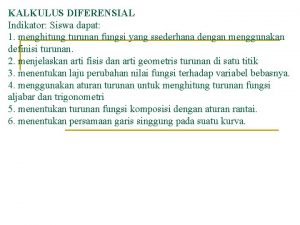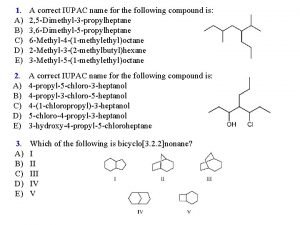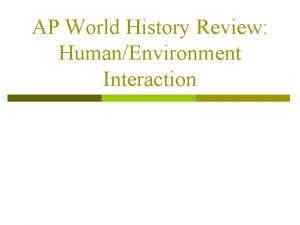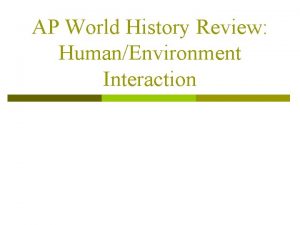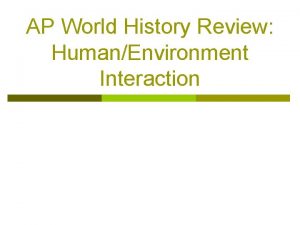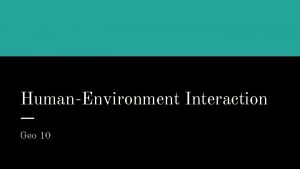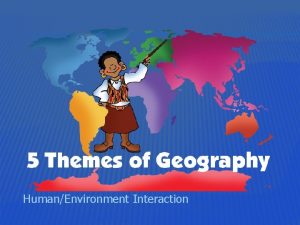CH 5 Sec 3 HumanEnvironment Interaction Students will






- Slides: 6

CH 5 Sec 3 Human-Environment Interaction • Students will understand – How North America was originally settled – How cities adapt to become suitable to the surroundings – Identify methods of overcoming distances in US and Canada – Identify one method that most impressed you that people have created or built to allow them to live in a harsh area of US or Canada

• Early Settlement of North America- first settlers were nomads (move from place to place hunting and gathering) – Beringia- land bridge the first settlers (future Native Americans) crossed over from Russia to Alaska 20000 -10000 years ago – Agriculture- Native Americans began growing crops around 3000 years ago • Why do you feel that US and Canada among the largest exporters of food today? (look at map P 125) – US and Canada grow lots of crops bc » Terrain- lots of grassland, Weather- mild, humid (means rain), good soil, lots of land space

• Cities- early cities needed to be by water, also important factors of settlement include landscape, climate, weather, and natural resources – Montreal- located along St. Lawrence River (on an island), really cold (100* days a yr. below freezing) • What can a city do to avoid cold and make living in severe winters more endurable? – City is (partially) underground- network of walkways shops, restaurants

– Los Angeles- located on Pacific, nice climate and weather – BUT what natural resource is LA missing that it needs to survive? • Railroad- hundreds of thousands of people began moving to LA when the Southern Pacific completed in late 1800’s • Aquaducts- brings water from Northern CA to LA • Problems- LA expanded into outlying areas, air pollution, lack of water, earthquake threatened zones

• Overcoming Distances- large countries, enormous distances, obstacles, and harsh climates made it difficult for early settlers to move around – Transcontinental Railroads- completed in late 1800’s connected East and West Coasts in both US and Canada – Highways- today people travel by car • Trans-Canadian Highway- 4, 860 miles from Newfoundland to British Columbia • US Interstate Highway System- 46, 000 miles of freeways that crisscross the nation (Hwy 10 and 5) – Analyze why Canada has one major highway near the US border and the US has highways all over?

• Overcoming Distances: inland water ways • St Lawrence Seaway-is a canal that connects Atlantic Ocean with Great Lakes most important shipping route in N. AM, – Locks- allow ships to be lifted up by closing gigantic gates and fill the area bt gates with water

